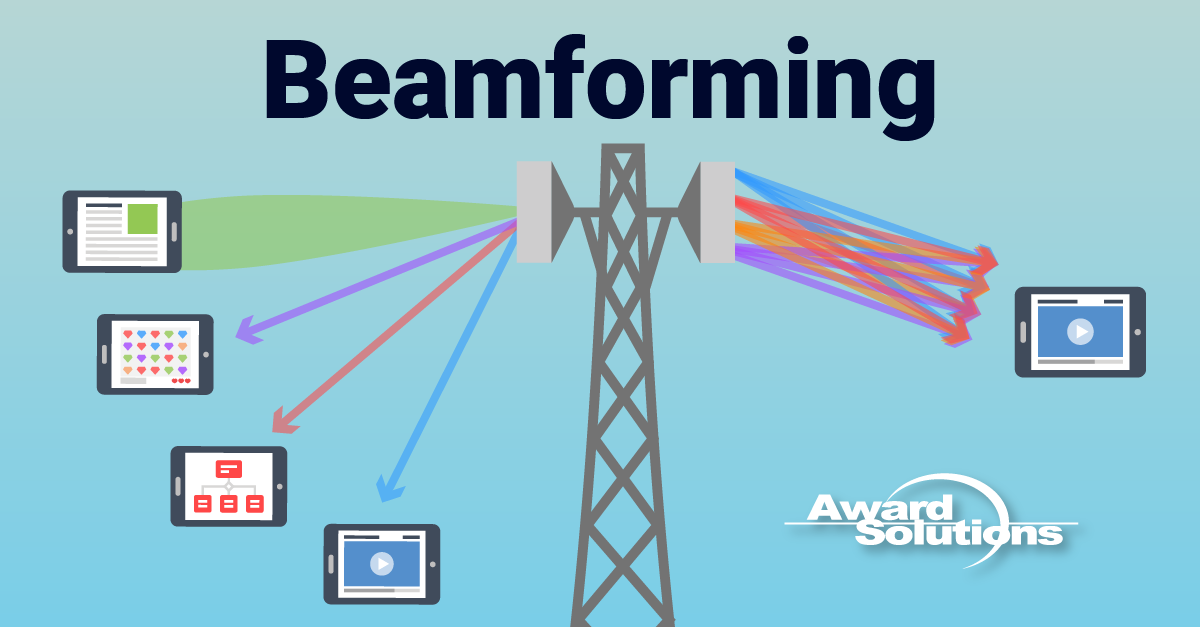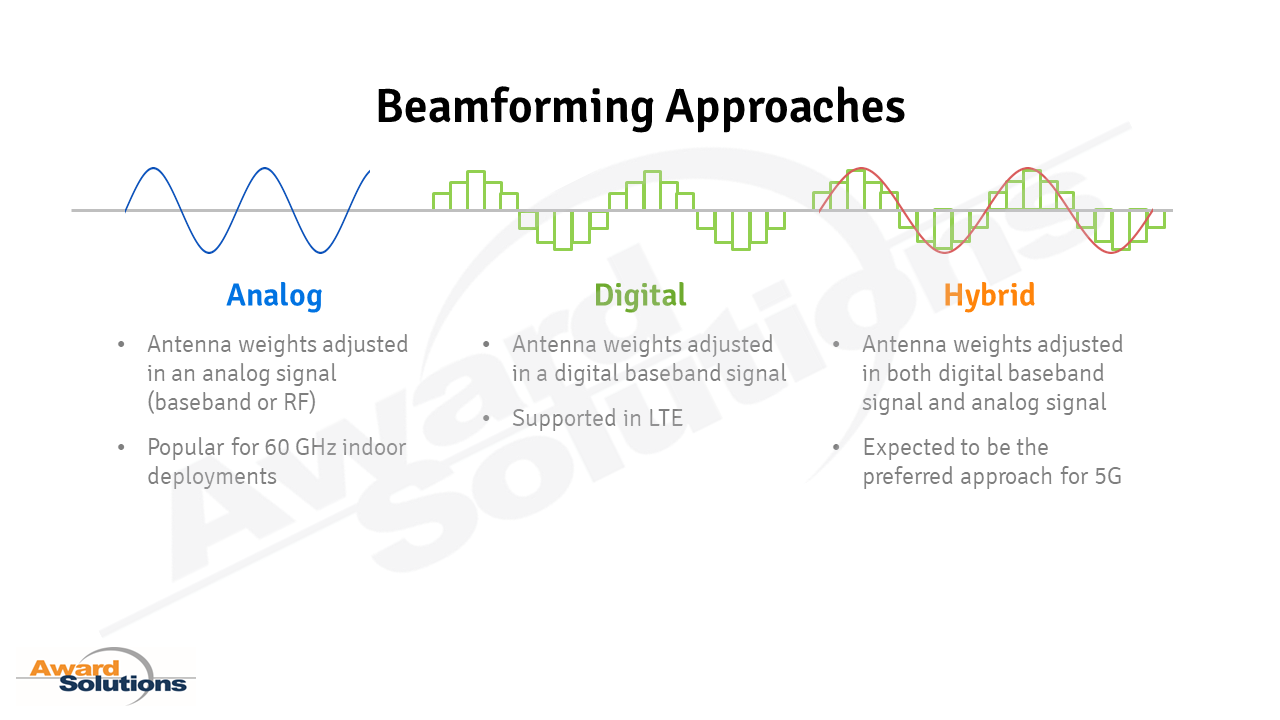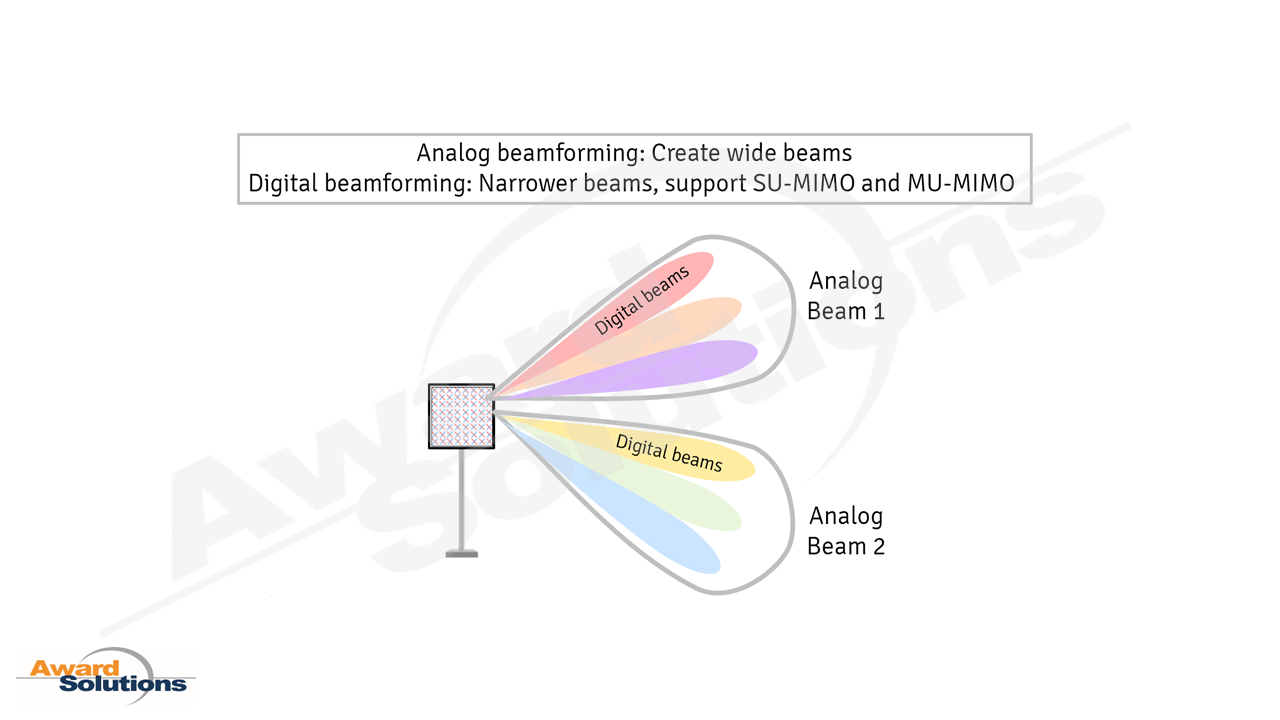
Beamforming and MIMO are two multi-antenna techniques that increase performance gains in wireless communications systems.
Beamforming is a signal processing technique that directs radio energy through the radio channel toward a specific receiver. Beamforming results in spatial selectivity using adaptive or fixed receive/transmit beam patterns. The beam patterns come from the different relative phase shifts observed between the antennas at different points in space. For example, a mobile phone at a certain point, relative to two antennas transmitting the same information at different relative phase offsets, will "see" degrees of constructive or destructive combining of the two waveforms from each of the two antennas at different points. When transmitting, a beamformer controls the relative phase of the signals from each transmitter antenna to create a pattern of constructive and destructive interference in the wavefront at the receiver.
Full Dimension Multiple Input Multiple Output (FD-MIMO) uses numerous transmit antennas at the cell site and several receive antennas at the User Equipment (UE). N-dimensional H-plane beamforming separates users in the horizontal plane. V-plane beamforming can separate users at the same azimuth angle (e.g., 20 degrees in the horizontal plane) but at different elevations. At a given angle in the horizontal plane, the base station can separate a nearby user and a far-away user with different azimuth and elevation angles.
Massive MIMO is an advanced antenna system that offers a high degree of freedom due to many radio frequency chains. As a result, Massive MIMO increases Signal-to-Interference Plus Noise Ratio (SINR) and throughput when using beamforming.
Beamforming and Spatial Multiplexing
When reusing the same radio resources in two different beams, multi-user MIMO is feasible, increasing a cell's capacity and throughput. For example, spatial multiplexing reuses the resources for a given user on different transmit-antennas, and data transmission on parallel streams increases throughput for a user. When massive MIMO creates a narrower, higher gain beam toward a user, the overall spectral efficiency increases from sending more information using a given number of resources. Additionally, when massive MIMO uses SDMA and reuses the resources in different beams, capacity in the cell/sector increases.
Three Types of Beamforming

Three main implementation approaches for beamforming are digital beamforming, analog beamforming, and hybrid analog and digital beamforming. These approaches differ in the way antenna weights are modified. Antenna weights generally include amplitude and phase adjustments, with phase adjustments being more popular. Digital beamforming involves the adjustment of antenna weights in the digital baseband signal. Beamforming in Release 8 LTE utilizes phase adjustments of digital modulation symbols using codebooks. Analog beamforming modifies antenna weights for the analog signals that could be at baseband or radio frequency. Finally, hybrid beamforming, as the name implies, involves adjusting antenna weights in both analog and digital signals, likely making it the primary approach for 5G cellular networks.

Analog beamforming is less expensive, but it is less flexible. In contrast, pure digital beamforming is highly flexible but expensive regarding components, processing, and costs. Thus, hybrid beamforming is the preferred choice for massive MIMO-based beamforming in 5G. Analog beamforming creates wider beams in a cell. In contrast, digital beamforming provides the flexibility of supporting spatial multiplexing (i.e., single-user MIMO) and multi-user MIMO. Additionally, the flexibility of digital beamforming creates narrower beams (e.g., only a couple of degrees of beamwidth), simplifying the overall implementation of beamforming using massive MIMO.
